Ever since Howard Carter uncovered King Tutankhamen’s tomb in Egypt’s Valley of the Kings, this northeast African country has been on the radar. With golden sand beaches stretching for miles along the eastern Mediterranean and Red Sea coasts and vast archaeological sites along the Nile River, Egypt draws plenty of tourists.
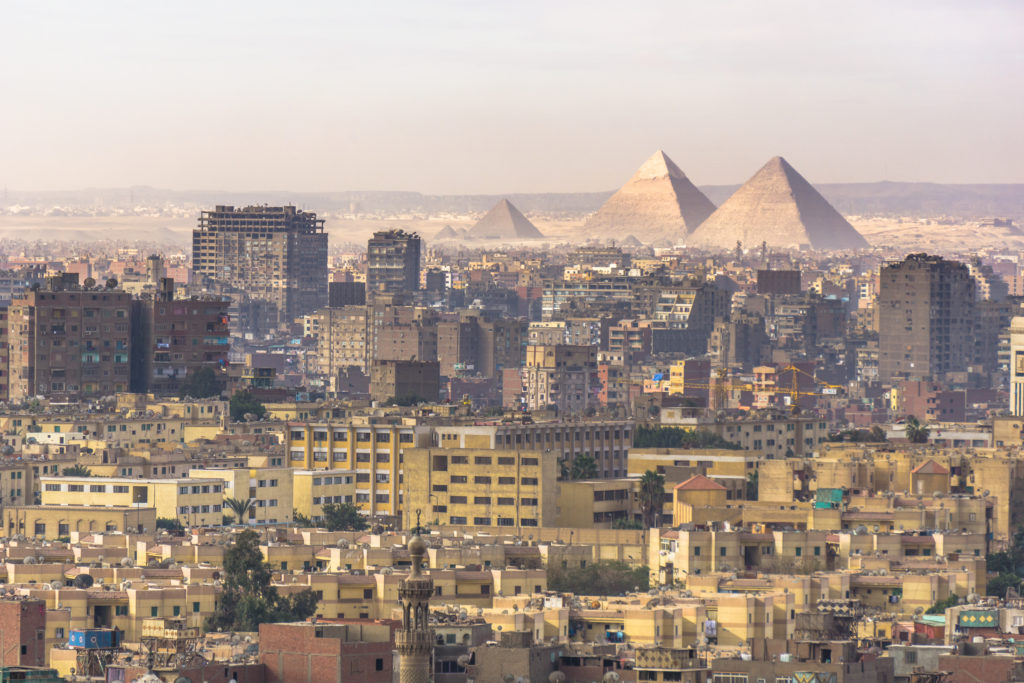
The Pyramids at Giza overlook the modern city of Cairo. Prin Adulyatham / Shutterstock.com
In recent years, following the widespread Arab Spring in 2011, tourism to Egypt declined drastically. While the country continues to face challenges, tourism is back up 264% since 2017.
That’s not really an outrageous number, either, considering that most luxury travelers seek authentic experiences these days. These are easy to find in Egypt, which draws travelers in search of desert oases, coastal resorts, and simple villages. Unfathomed architectural gems, like the temples at Luxor, Memphis, Karnak, and Thebes, abound – with a fraction of the tourists found elsewhere. Lonely Planet just ranked the Southern Nile as one of its top ten best value places to visit in 2019.
Egypt – Why its A Destination to Return to
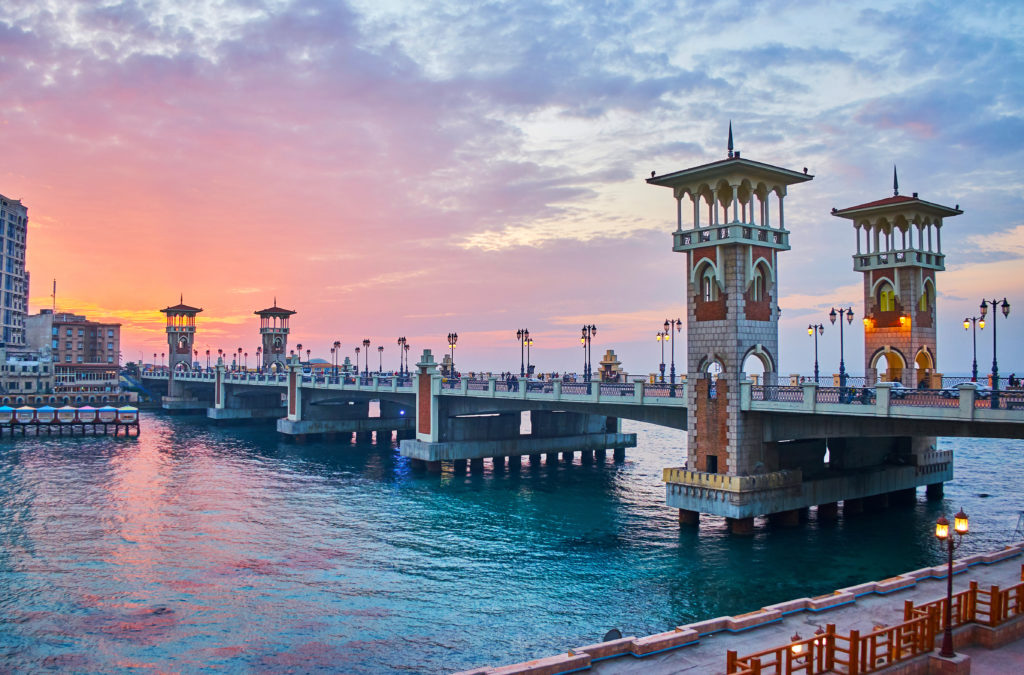
This famous bridge in Alexandria features numerous Islamic motifs on the towers
Egypt’s allure is its mystery. We still don’t know exactly what the hieroglyphics mean, nor are we sure why, exactly, they decided to build pyramids as their burial chambers. It’s almost certain there are tombs not yet discovered.
Like Turkey, Egypt has long been a glittering gem in the Middle East. World-class shopping, international cuisine, an ancient culture – we love it all. Did the Arab Spring devastate tourism to Egypt? Yes, most certainly. Should you be afraid to go now? No.
I’ve seen Egypt highlighted as a “new” destination on several different platforms, including the recent Virtuoso Luxe Report. Several of my suppliers recently ran series on it. I wouldn’t be surprised to see tourism skyrocket back up in the next five years. If you’re seeking value for the US dollar alongside an exciting blend of ancient and modern, Egypt needs to be your next destination.
Egypt – Is It Safe?
Yes! While there are challenges, the country is stable and welcoming tourism with open arms. A supplier colleague described citizens as warm and friendly, willing to assist travellers as if they were family. He talks of stopping someone to ask where the hotel was, and being led there by a local. They talked the entire walk about the city and what they should do.
I recently met a woman who travelled to Egypt in October 2015. They arrived one week after a group of Mexican tourists were killed, and one week before the Russian airliner crash. Shauna Coons, from Kansas City, travelled with friends, including two Egyptians who moved to the US when they were young. She said that, while she felt perfectly safe, the “Egyptian Revolution was still felt and seen everywhere,” especially in Tahrir Square, site of the protests. The group also travelled to Alexandria and the Red Sea. Coons describes the beach as “the most memorable beach experience that I have ever had.”
Virtuoso suppliers and those who have been there more recently agree. Egypt is perfectly safe, and ready for tourism.
Where to Go And What to See in Egyptian Cities
The majority of international flights fly into Cairo International Airport (CAI), although there are connections available into Alexandria and Sharm El-Sheikh via European gateways.
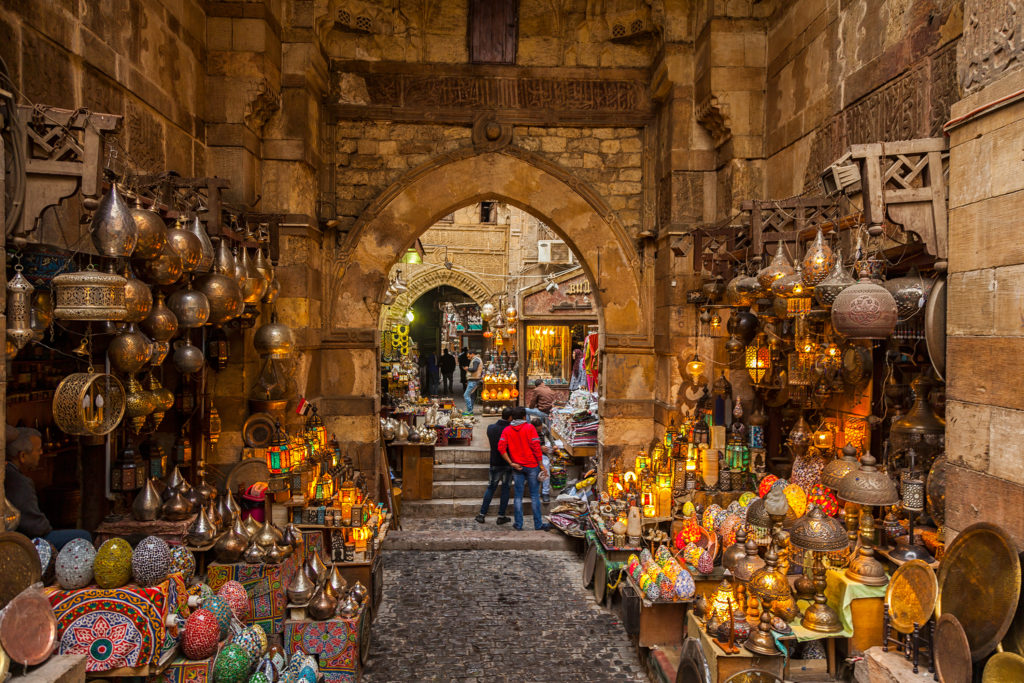
Shop for traditional souvenirs, household items, and more at the bazaars. Merydolla / Shutterstock.com
To get around, rely on a private car and driver rather than striking out on your own. In the cities, Uber is prevalent and cheap.
Regarding currency, the Egyptian pound weakened dramatically against the US dollar in 2017, going from .15 to .05. To fly to Egypt inexpensively, consider using a travel rewards credit card that earns miles on eligible purchases. Once in Egypt, use a credit card with no foreign transaction fees for hotels and large expenses, and keep cash for the smaller expenses.
Cairo
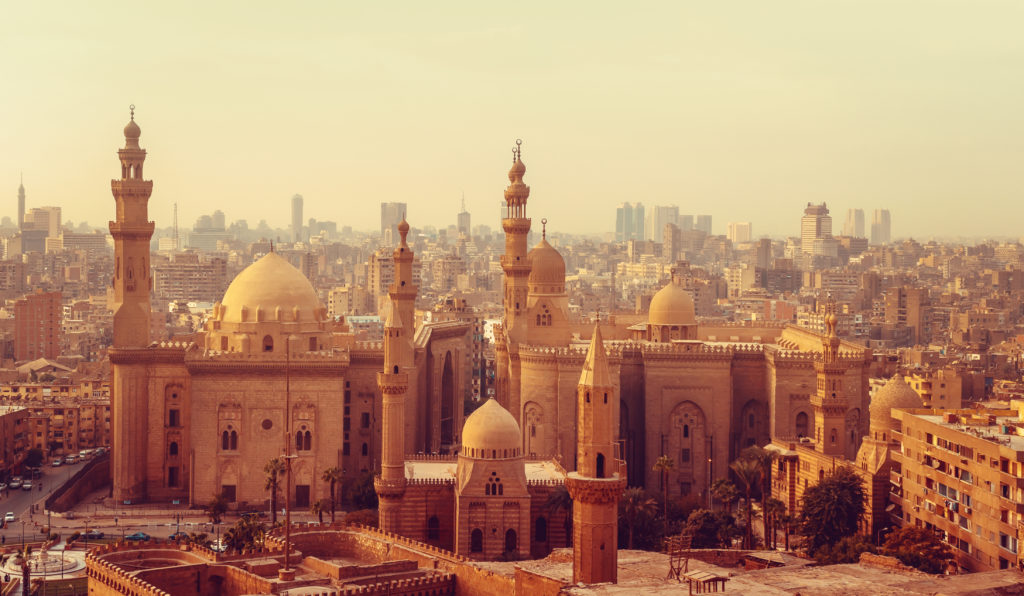
Cairo’s skyline includes minarets and mosques alongside the modern skyscrapers
According to the World Travel and Tourism Council, Cairo is one of the fastest-growing economies in the world. Once the heartbeat of Egypt, it is the native home of both medieval Islam and Coptic Christians, and is a city filled with medinas, mosques, minarets, and churches. Good reason, then, to stay in Cairo for a few days. Here, you can visit the Sphinx and pyramids at Giza, the Cairo Citadel, Egyptian Museum, and the Khan Ali-Kalili bazaar.
Unique experiences include a private tour of the Sphinx with a world renowned Egyptologist. Stay in luxury at one of the Four Seasons, the Ritz-Carlton, Sofitel, or Fairmont.
Alexandria
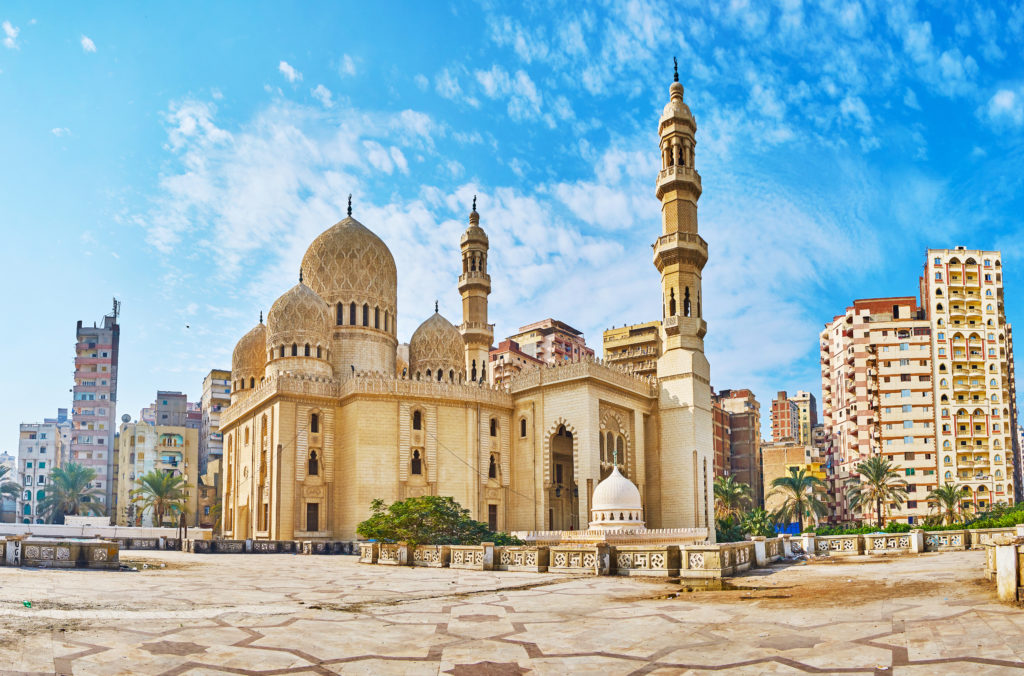
Alexandria has plenty of Islamic architecture, like this beautiful mosque
Second city Alexandria is a financial hub and a multicultural melting pot. Founded by its namesake, Alexander the Great, Alexandria flourished under the subsequent Ptolemaic Dynasty, which built the city Alexander envisioned. Home to the Lighthouse of Alexandria and the Library of Alexandria, both now nonexistent, Alexandria was the richest city in antiquity. During 1st-3rd centuries BCE, Alexandria was the largest city, as well as a center of knowledge.
Following Caesar’s death, it’s where Cleopatra and Marc Antony ruled from until their suicides in 30BCE, one year after Octavian/Augustus conquered the city for Rome. Today, visitors to Alexandria can see a modern library inspired by the ancient one. Other attractions include the 15th century Qaitbay Citadel, Mahmoud Said Museum, Catacombs of Kom Ash Shuqqafa, and the Mosque of Abu Abbas Al Mursi.
Aswan
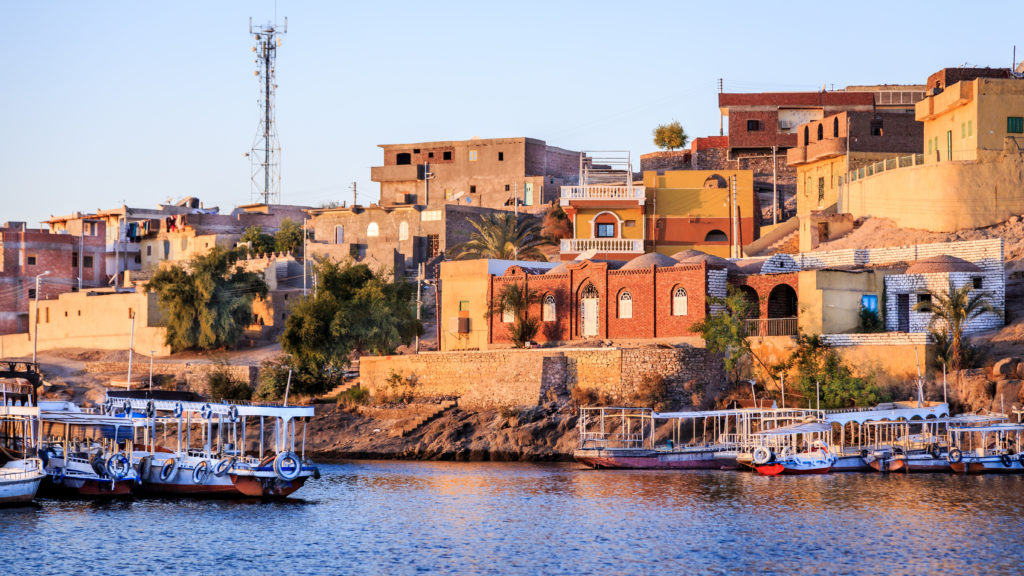
Aswan’s traditional boats line the riverbank of the Nile in this southern Egyptian city
Aswan, a city on the Nile in southern Egypt, is home to the famous Aswan Dam, the Nubian Museum, and the Philae temple complex. Cruise the Nile between Luxor and Aswan on Lindblad’s Oberoi Philae for an in-depth discovery of this ancient region.
South of Aswan are the temples of Abu Simbel; this is an easy day trip from the city. Cut into the rock face during the reign of Ramses II, the temples depict Ramses and his wife, Nefertari.
Egyptian Resorts on the Red Sea
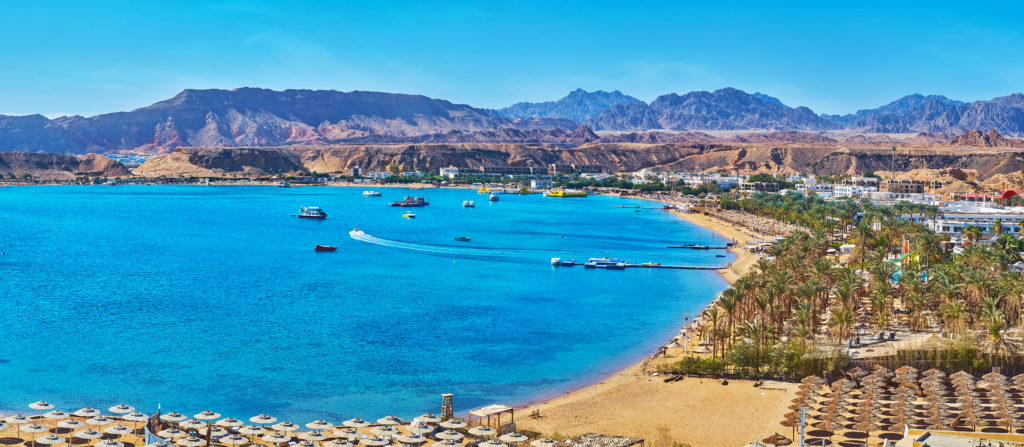
Egypt’s Red Sea coast is a resort hot spot
The Red Sea coast of Egypt is a resort hot spot, home to vast swaths of wide sand and swaying palms. Out of view are the impressive coral reefs, though, and the snorkelling and diving is legendary. Easily accessible from Cairo, or various European cities, the Red Sea coast beckons those in search of sun, sand, and adventure.
Stay in Sharm el-Sheikh or Hurghada at luxurious resorts like the Four Seasons, Steigenberger, Mövenpick, or Oberoi.
Valley of the Kings and Surroundings
Located on the Nile’s west bank in Thebes, or modern-day Luxor, the Valley of the Kings is home to numerous tombs of the New Kingdom pharaohs. Tomb raiders and treasure hunters have known about it for centuries. While most of the tombs were opened and raided in antiquity, they still convey the glamor and gild of the New Kingdom. The site has been a UNESCO World Heritage Site since the late 1970s.
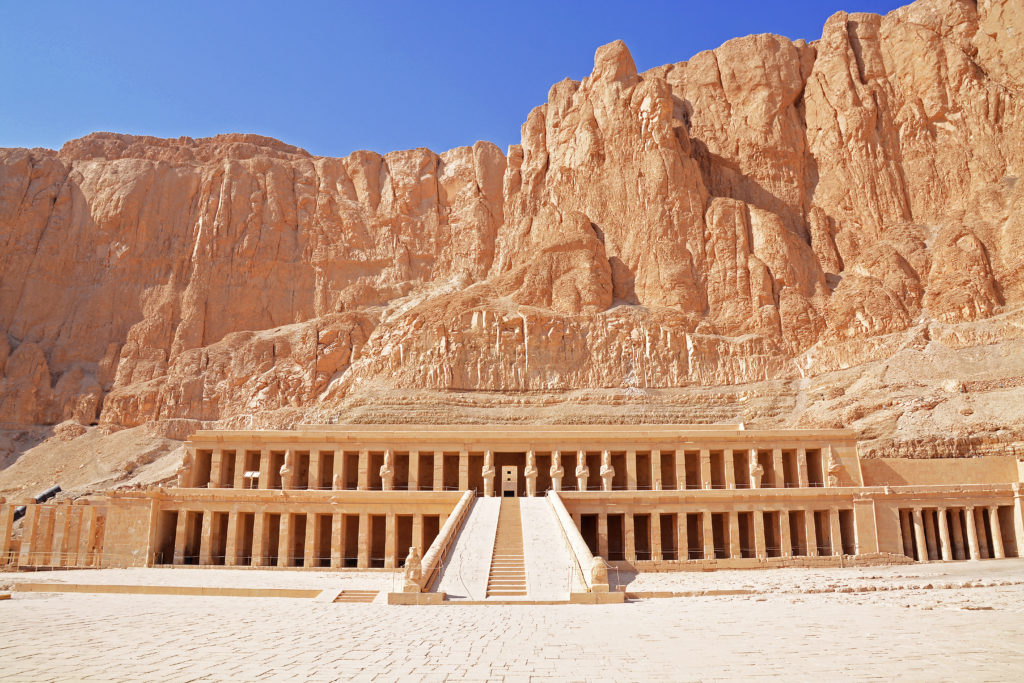
Hatshepsut’s mortuary temple lies near the Valley of the Kings, one of the burial places for Egypt’s New Kingdom rulers
In 1922, Howard Carter found King Tut’s tomb; in 2005, Otto Schaden found one a mere 50 feet from the entrance to King Tut’s tomb. Other sites in the Valley of the Kings include Thutmose I, Ramses X, and perhaps Amenhotep I. Despite its name, the valley also holds the tombs of royal wives and children, although the nearby Valley of the Queens holds more wives and children. Deir-al-Bahri, another site nearby, boasts the Mortuary Temple of Hatshepsut.
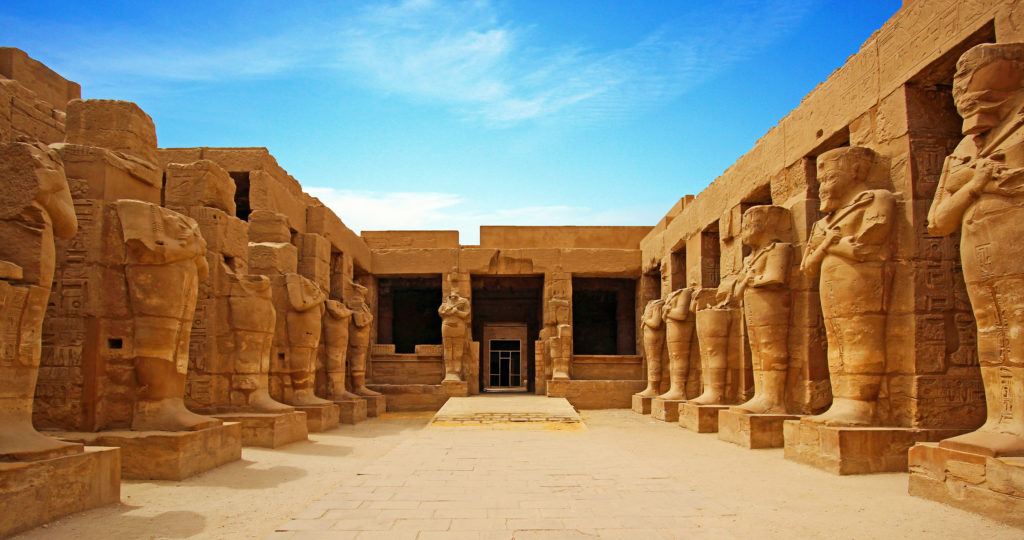
Karnak is a vast temple complex near Luxor, just one gem from the golden age of the pharaohs
Luxor, or ancient Thebes, houses the Luxor Temple complex and the ruins of Karnak. The scale of the Karnak complex is astounding. The hypostyle hall is the largest religious structure ever built, while the interior temple is so large that St Peter’s, Milan Cathedral, and Notre Dame could fit inside.
Why Go To Egypt Now
So, why go to Egypt now? In short, because it will never be the same as it is now. Tourism to Egypt is increasing, and I fully expect that rise to continue. At present, even the vast temple complexes at Luxor only get 4,000 visitors per day. To put that into comparison, Disney World receives nearly 56,000 visitors per day. The culture, the history, the desert, should awaken a sense of awe. Egypt remains an exciting destination, and one that should be on your bucket list.
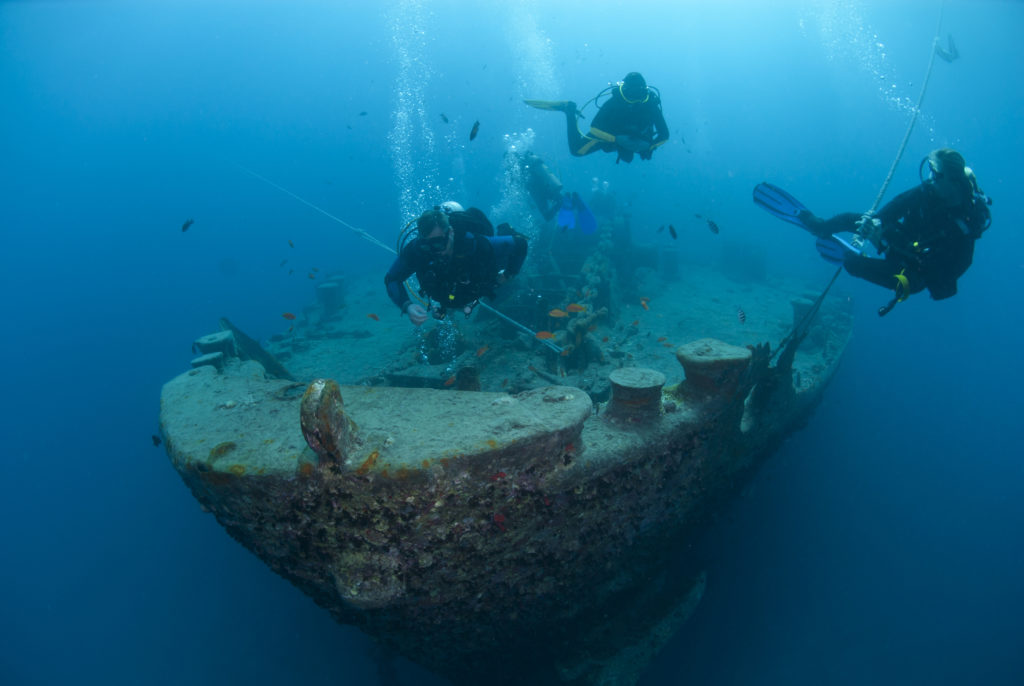
The Red Sea is a popular dive spot, with plenty of shipwrecks like this one
*
Sarah is a luxury travel advisor and avid traveller. When she isn’t writing for Point Me To The Plane you can find her crafting custom itineraries for clients or exploring the far reaches of our wonderful planet. Read more about her adventures at The Girl With the Map Tattoo.
The responses below are not provided or commissioned by the bank advertiser. Responses have not been reviewed, approved or otherwise endorsed by the bank advertiser. It is not the bank advertiser's responsibility to ensure all posts and/or questions are answered.
3 comments
I agree Egypt is a great place to go and a great value. A couple of notes on the article:
–Even Egyptologists get it wrong, but it is “hieroglyphs” (noun), not “hieroglyphics” (adjective). And they have been translated for a very long time now (by French boy genius Champollion). There may be a word here and there we can’t translate, but no more than in any other ancient language.
–The pyramids were built as burial chambers. There is no other possible use for them (tour guides and Ancient Aliens or whatever the latest Discovery conspiracy show notwithstanding). There’s no dispute about this among credible Egyptologists, and it is easy to see the evolution of them if you get away from the touristy Giza pyramids and go see the far more important Djoser, Meidum (with a mastaba (the immediate predecessor burial chamber form to the pyramids) beside it), Bent and Red pyramids. By the way, a small bribe paid to the guards at any of these (or basically anything in Egypt) will get you full access.
Thanks Kevin! Glad you enjoyed the article 🙂
Egypt is amazing and everytime i visit i find new places to explore